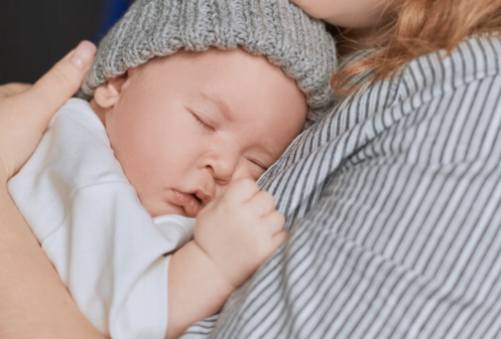Creating a Sleep Training Plan That Supports Attachment Theory
22 October 2025 by Faiza N.Parenting a baby can be both a rewarding and challenging experience, especially when it comes to establishing healthy sleep habits. As a caregiver, it's natural to want to ensure that your little one feels secure and supported, even during the process of sleep training. Understanding attachment theory and its principles can provide valuable insight into how to create a sleep training plan that not only promotes restful sleep for your baby, but also strengthens the bond between you and your child. By aligning sleep training methods with attachment principles and addressing common concerns, it is possible to achieve a balance between consistency and responsiveness while supporting your baby's emotional needs. This article aims to explore the relationship between attachment theory and sleep training, providing tips and resources for creating an attachment-friendly sleep training plan that fosters a strong parent-child bond.

Understanding Attachment Theory and Its Principles
Understanding Attachment Theory and Its Principles Attachment theory, developed by psychologist John Bowlby, suggests that the bond between a caregiver and a child plays a crucial role in the child's emotional and social development. The theory emphasizes the importance of a secure attachment, which is characterized by a child's trust in their caregiver to meet their needs and provide comfort and support. This secure attachment lays the foundation for the child's future relationships and emotional well-being. Key principles of attachment theory include the idea that children seek proximity to their caregiver when distressed, use the caregiver as a secure base from which to explore the world, and rely on the caregiver for emotional regulation and comfort.The Importance of Secure Attachment for Babies
The Importance of Secure Attachment for Babies Secure attachment is crucial for the healthy emotional and cognitive development of babies. It provides them with a sense of safety and security, which is essential for their overall well-being. Babies who develop secure attachments are more likely to have positive relationships and emotional resilience as they grow older. Therefore, it is important to prioritize and support secure attachment in infancy.Sleep Training Methods and Their Relationship to Attachment Theory
Sleep training methods often raise questions about their impact on attachment theory. Some methods emphasize independence and self-soothing, while others focus on the caregiver's responsiveness to the baby's needs. Understanding how different sleep training methods align with attachment theory principles can help parents make informed decisions about their approach to fostering secure attachment while promoting healthy sleep habits.Creating a Sleep Training Plan That Aligns with Attachment Principles
When creating a sleep training plan that aligns with attachment principles, it is important to prioritize the emotional needs of the baby and the parent-child bond. This may involve using gentle sleep training methods that prioritize responsiveness and sensitivity to the baby's cues, while also promoting secure attachment and emotional connection. It is essential to consider the long-term impact of the sleep training plan on the parent-child relationship and to prioritize nurturing the attachment bond throughout the process.Addressing Common Concerns About Sleep Training and Attachment
Addressing Common Concerns About Sleep Training and Attachment One common concern about sleep training is that it may lead to a lack of emotional connection between the caregiver and the baby. Some parents worry that by allowing their baby to cry during sleep training, they are causing emotional harm and creating an insecure attachment. It's important to address these concerns by understanding that sleep training can be done in a sensitive and responsive manner that supports attachment principles. By balancing consistency with responsiveness, caregivers can help their baby learn healthy sleep habits while also meeting their emotional needs.Balancing Consistency and Responsiveness in Sleep Training
Balancing Consistency and Responsiveness in Sleep Training One of the key elements of creating a sleep training plan that supports attachment theory is finding a balance between consistency and responsiveness. Consistency is important for establishing a routine and helping babies feel secure, while responsiveness ensures that their emotional needs are met. Finding the right balance between these two factors is crucial for promoting a strong parent-child bond and fostering healthy sleep habits.Tips for Maintaining a Secure Attachment During Sleep Training
- Be responsive to your baby's cues and needs, even during sleep training, to help them feel secure and supported.- Practice gentle touch and soothing techniques to reassure your baby and reinforce the parent-child bond.
- Use positive reinforcement and praise to encourage your baby as they learn to self-soothe and sleep independently.
- Stay emotionally attuned to your baby's signals and adjust your approach as needed to meet their attachment needs.
- Create a consistent and predictable bedtime routine to provide a sense of security and stability for your baby.